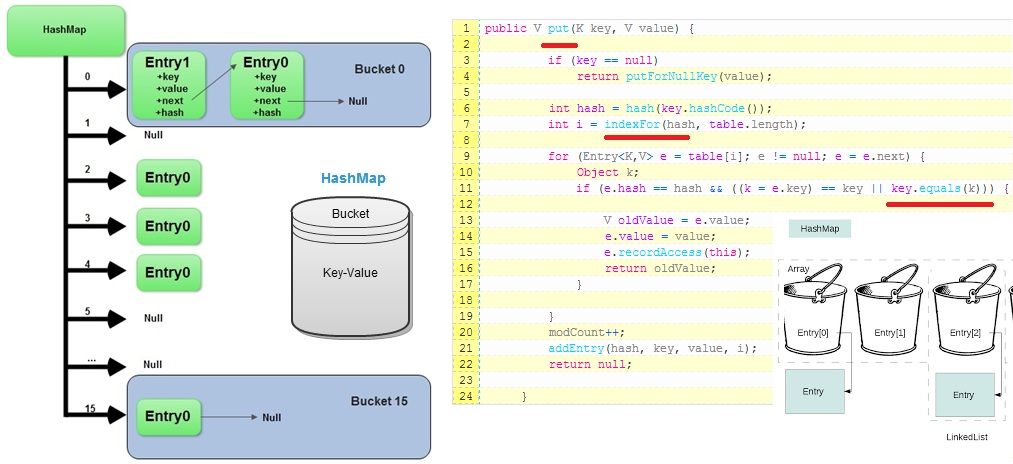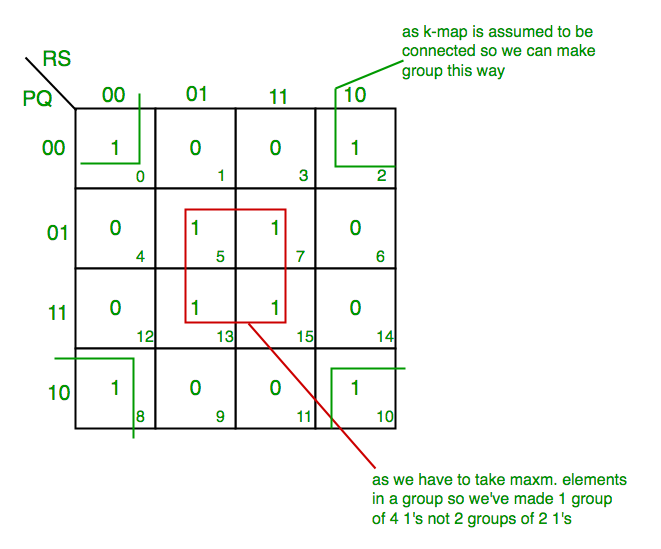

Take a look at an example first: package com.explainjava It’s a good practice to use immutable objects as a key, further you’ll understand why. JavaDocs say: “neither the key nor value can be null”. I marked that because for example HashTable and ConcurrentHashMap. Now 1 is associated with “Key1”, 2 with “Key2” and 3 with “Ke圓”. public V putIfAbsent(K key, V value) – if this key is not already associated with a value, puts a given value and returns null, otherwise returns the current value.If you use a Set, your entities have to have equals () and hashCode () methods. You can map one-to-many and many-to-many associations to different sub-types of Collection. So, if use an entity as the key, it needs to provide both methods. public void putAll(Map m) – puts all values from another HashMap into the current one If you map an association to a Map, your map key needs to implement the equals () and hashCode () methods.public V put(K key, V value) – puts a value for a key.There are 3 methods to put value/values into HashMap: In my case, the various types of Objects that needed checking were of four types: String. Initialize HashMap data structure example: Map map = new HashMap() Ī string is a type of key in the map, Integer is a type of a value. I needed to check the values in various Lists and Maps. I’ll explain the main or the most frequently used methods in HashMap, others you can take a look without my help.

I don’t want to list all methods in HashMap Java API. Keep reading and use a table of contents for quick navigation. methods and functions and its performance (O(n) time complexity) If, hashCode() method is overridden properly, we will find bucket location using hashCode() method, we will obtain Entry on that bucket location, then iterate over each and every Entry (by calling Entry.next) and check whether new and existing keys are equal or not.If keys are equal replace key-value in Entry with new one, else call Entry.In the scope of this article, I’ll explain: Public static void main(String.Java HashMap is not a thread-safe implementation of key-value storage, it doesn’t guarantee an order of keys as well. In order to determine if two objects are the same, equals() compares the values of the objects’ attributes: We use the equals() method to compare objects in Java. In this case, the methods are not fulfilling the real purpose of equals() and hashcode(), which is to check whether two or more objects have the same values.Īs a rule, when you override equals() you must also override hashcode(). When the equals() and hashcode() methods are not overridden, you will see the above methods invoked instead. (It’s not that important to know exactly how this method works unless you are writing JDK native int hashCode()
#Equals method map java code
This is a native method, which means it will be executed in another language like C, and will return some code regarding the object's memory address. When the hashcode() method is not overridden, the default method in the Object class will be invoked. The method is checking whether the current instance is the same as the previously passed Object. Below is the equals() method in the Object class. To understand how overriding works with equals() and hashcode(), we can study their implementation in the core Java classes. Every Object in Java includes an equals() and a hashcode() method, but they must be overridden to work properly. These methods are designed to be overridden according to their specific general contract. Let us see the available list of Java Array Methods and their corresponding description. This Array Class also contains a static factory that allows arrays to be viewed as Lists. The Java Method performs Searching array items, sorting them, etc. Method overriding is a technique where the behavior of the parent class or interface is written again (overridden) in the subclass in order to take advantage of Polymorphism. Every Java object has two very important methods, i.e. The Array Class provides various Java Array Methods or Functions for manipulating arrays.

Overriding equals() and hashcode() in Java Together, these two methods help us create more flexible and cohesive code. This would make code really confusing and hard to read. Without equals() and hashcode() we would have to create very large " if" comparisons, comparing every field from an object. Simply put, these methods work together to verify if two objects have the same values. Java important methods equals (), hashCode () and compareTo () Today, I am just writing up on three very important methods that are often used together for sorting and comparison on different Java. In this Java Challenger you’ll learn how equals() and hashcode() combine to make object comparisons efficient and easy in your Java programs.


 0 kommentar(er)
0 kommentar(er)
